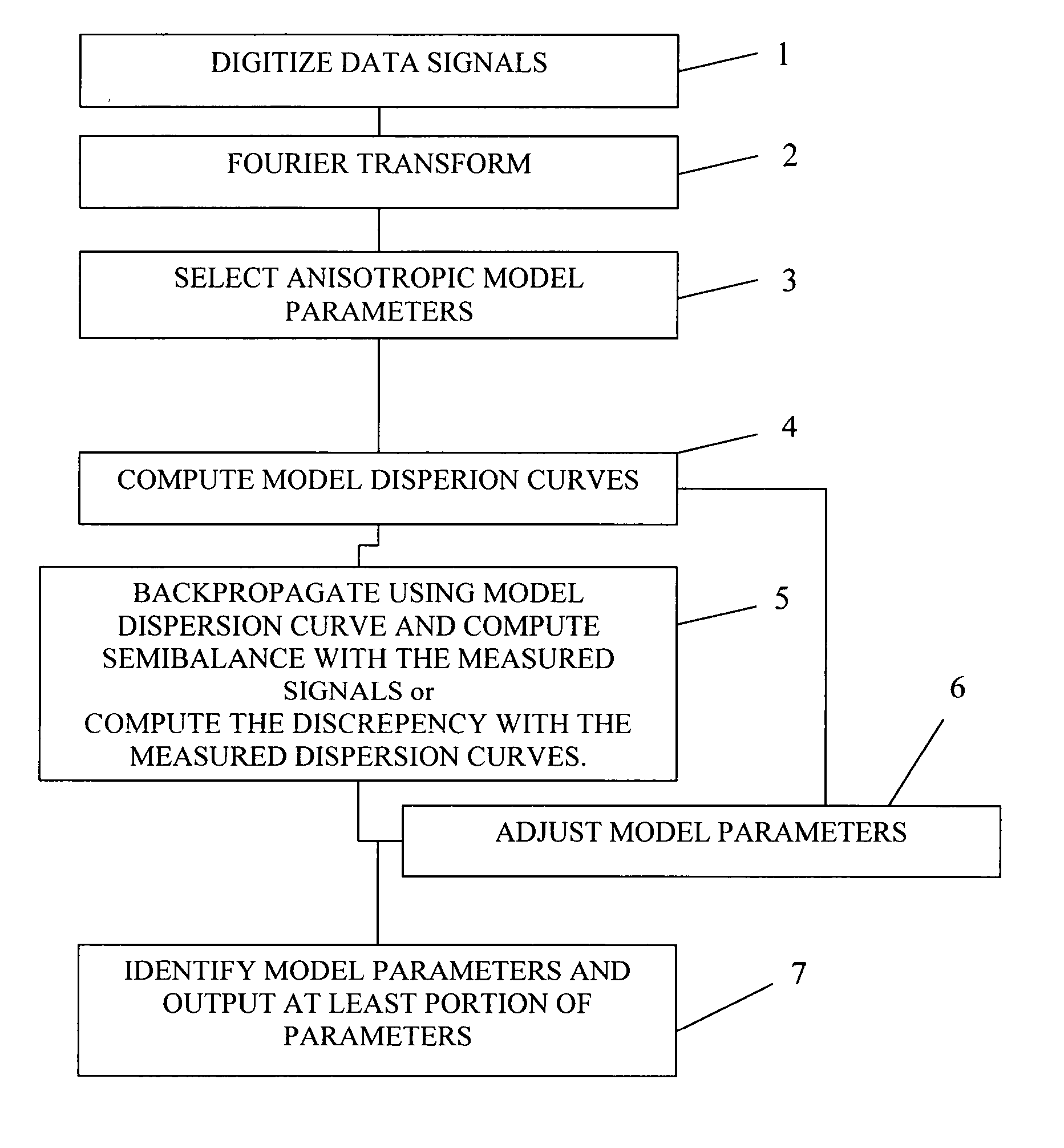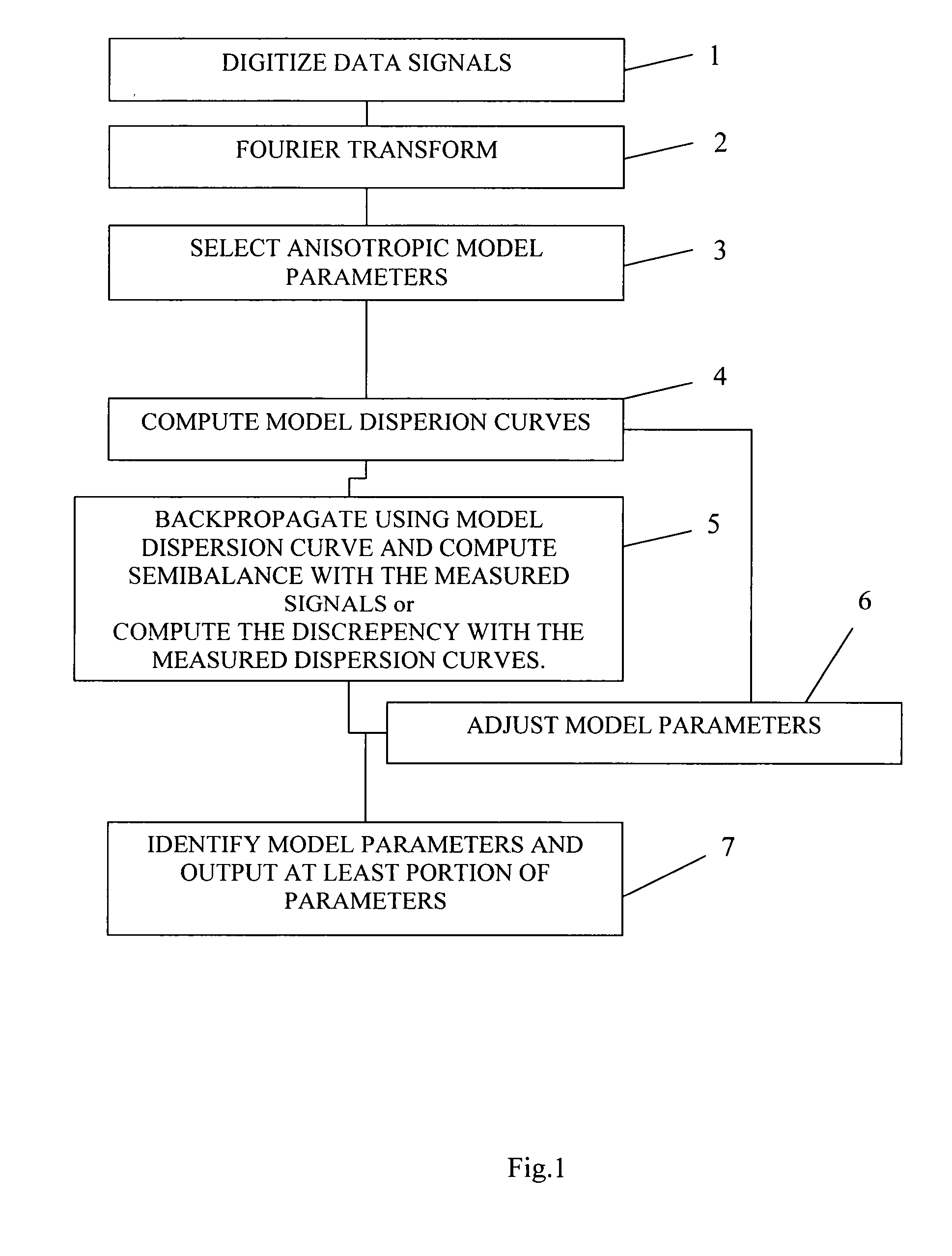A method for processing acoustic waveforms
a waveform and processing method technology, applied in the field of acoustic well logging, can solve the problems of heavy computational requirements, inability to meet the requirements of acoustic waveform processing, and inability to meet the requirements of a circular borehol
- Summary
- Abstract
- Description
- Claims
- Application Information
AI Technical Summary
Benefits of technology
Problems solved by technology
Method used
Image
Examples
Embodiment Construction
[0009]Acoustic data acquired with a logging tool are waveforms received by receivers. These waveforms include a large amount of data, which would need to be analyzed with an appropriate method to derive information related to formation properties.
[0010]FIG. 1 shows a schematic of a process in accordance with one embodiment of the invention for inverting borehole-formation parameters from acoustic waveforms. As shown, the acoustic waveforms are digitized (step 1 on FIG. 1) and converted into the frequency domain by a suitable transformation (e.g., Fourier Transform (FT) or Fast Fourier Transform FFT)—step 2 on FIG. 1. According to steps 3 and 4 model dispersion curves are generated based on an anisotropic borehole-formation model having a set of anisotropic borehole-formation parameters by specifying governing equations and using a matrix Riccati equation approach.
[0011]Then, the frequency domain signals are back propagated using model dispersion curves to correct for dispersiveness ...
PUM
 Login to View More
Login to View More Abstract
Description
Claims
Application Information
 Login to View More
Login to View More - R&D
- Intellectual Property
- Life Sciences
- Materials
- Tech Scout
- Unparalleled Data Quality
- Higher Quality Content
- 60% Fewer Hallucinations
Browse by: Latest US Patents, China's latest patents, Technical Efficacy Thesaurus, Application Domain, Technology Topic, Popular Technical Reports.
© 2025 PatSnap. All rights reserved.Legal|Privacy policy|Modern Slavery Act Transparency Statement|Sitemap|About US| Contact US: help@patsnap.com



